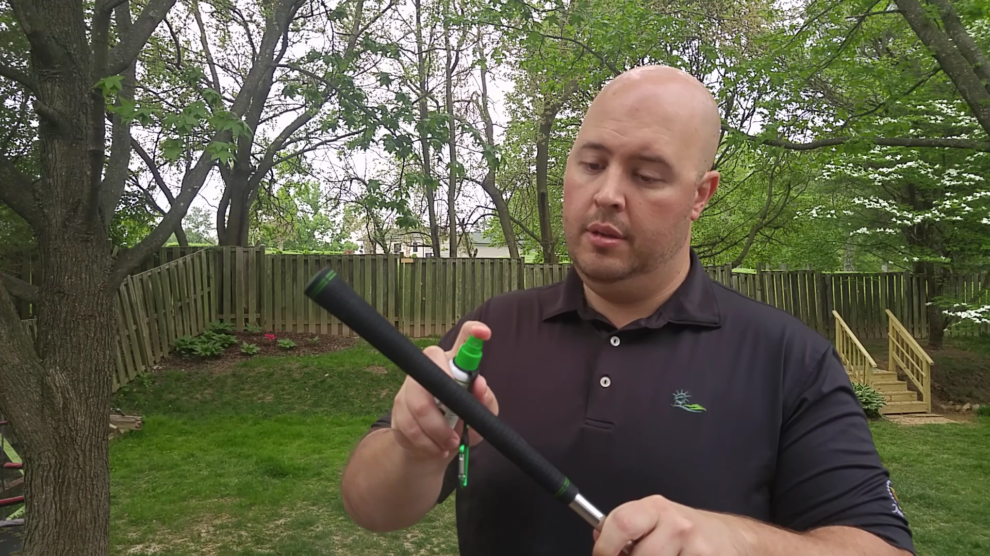I spent a lot of Saturdays -- about 25 of them, in total -- watching Matt Furstenburg. I went to the University of Maryland, and, up until having young kids made it way too difficult, many of my autumn Saturdays were at old Byrd Stadium watching Furstenburg catch and block for the Terrapins. By the time he was done at Maryland, the New Jersey product had progressed to the National Football League for a season with the hometown Baltimore Ravens.
However, before Furstenburg had even left the College Park campus, he was already working on what he spends his Saturdays, Sundays and most other days now doing. He teamed up with the University of Maryland's chemical engineering department, trying to figure out a way to improve the grip on football gloves, which rapidly lose their tackiness. Furstenburg figured there had to be a better way. And so, with the chemical engineers and business partner Harry Geller, they got to work on bringing a solution to market.
That solution, which is a funny Maryland thing, actually came from crab shells. The department's lead engineer, Dr. Srinivasa Raghavan, had experience in working with strategically modified chitosan, a natural biopolymer found in the bounty of the Chesapeake. It's non-toxic, but it can adhere to skin and tissue, so it had been used extensively in medical products. Dr. Chanda Arya and company co-founder Kevin Diehn took the chitosan further, creating alcohol-soluble gel formulations for thin polymer forms which dried quickly on the surface of something like a football glove. What they came up wasn't too tacky, and it didn't transfer to the football. Perfect! Grip Boost Football Gel came to market in 2014. The company has seen its sales basically triple every year.
In his time as a professional athlete and developing business relationships, Furstenburg took up golf. At 6 feet, 4 inches, he's got the profile of a Big Easy, and he's developing as a player. He can shoot in the mid-80s, and he loves the challenge of the sport. Along his journey as a golfer, Furstenburg realized his gel would be great for golf. Having confidence in your golf grip is essential to maintaining proper grip pressure and being able to play in rainy conditions or the humidity of a mid-Atlantic summer. After enough wear and play, though, that grip is not as tacky as it once was. Details designed to create natural friction points with the hand and fingers fade. Golfers, who are often reluctant to take the requisite day or two to have their clubs regripped, will just stick with bad grips and believe they can hang on with them for another round or 10, all the while unconsciously sabotaging their grip and touch and performance.
That's where Grip Boost comes in. Furstenburg and his team have a spray-on product for golf grips. For $13 per bottle, the spray will create a thin, tacky layer -- Furstenburg said it's like the tackiness of a Post-It note, and the office-product connoisseur in me tends to agree -- on your grips and extend their life for the remainder of a season with a bottle. Spray once, maybe twice on your grips per round before having to replace them. Use the spray when it's particularly humid out. If you just have clammy hands, the spray can help sustain good grip pressure.
The spray also works on golf gloves, too, and most golfers play with a glove. So if you prefer spraying onto the glove instead of the grip -- or hitting up both -- that's fine, too.
The grip is the foundation of the golf swing. If you have a bad grip, chances are you won't recover. That means a product like Grip Boost's golf spray is great to have in your bag for those times when you need a little more certainty holding the club.
Grip Boost also makes a high-value, Cabretta leather glove they call Second Skin 2.0. The portions of your hand which touch the club are covered with leather, while the back of your hand touches soft, flexible dimpled mesh for breathability. Webbing weaved in with the mesh creates a second skin kind of feel (hence the name). At $15, it's a great deal, too.
Furstenburg has designs of going further into golf, and it's not hard to imagine integrating Grip Boost technology into a high-end, first-run golf grip. If a golf grip came along that maintained its tackiness longer than most grips do these days, Grip Boost could find itself as an insurgent golf brand. Just looking at the success of other companies in the golf space, a smaller brand with a big idea can become a big brand in a hurry. Golfers talk, and they'll talk about a great golf grip.

